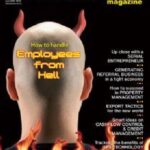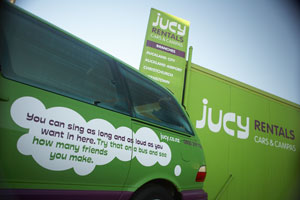DRIVING YOUR DOLLARS FURTHER
As business times get tougher – one of the first areas to come under cost scrutiny is the company vehicle fleet. Glenn Baker looks at how companies are extracting more value from their vehicle leases during the recession.
|
If ever there was a time for Happily, for SME business owners, in times like this there are indeed ways of getting more bang from their vehicle leasing buck. Vern McLaren, Northern Region sales manager for FleetPartners says companies are now looking at shorter six to 12 month terms on ex-lease vehicles – where traditionally the term was three years. “Either that or they are extending their existing contracts out for another six to 12 months in the hope that it will see them through the current economic cycle.” McLaren says the size of company vehicles is still trending downwards, and he sees that continuing as the number of applicants for executive jobs rises. This, naturally, has had a compounding effect on the sales of new six and eight cylinder cars. He says there are definitely opportunities out there for fleet managers to explore the option of contract extensions at a very attractive rate, or to source replacements from the vehicles that are coming back off leases early, due to the slowdown in the market. “The corporate market is probably more likely to take an extension on the contract – largely to maintain a consistency in line with company policy and because employees have contractual entitlements,” he says. “For small and medium size companies (SMEs) its more ‘user chooser’ – they are more likely to downsize from say a Falcon to a Mazda 6, because it’s all about matching needs with economics.” Downsizing is a trend also noticed by Alan Roberts, GM Fleet and Fuel for Cardlink – along with a trend towards diesel vehicles. Vehicle maintenance expenditure is up too, he says, as companies invest in their vehicle assets more to extend their life. And the quest to extract value is also impacting on the fuel card aspect of the market. “There’s been a definite move to vehicle ‘all services’ cards as companies look to extend the payment terms for servicing as well as fuel,” says Roberts. Meanwhile, on the environmental front, sustainability may well have taken a ‘back seat’ for many business owners in recent times. In the past six months LeasePlan managing director Charles Willmer has noticed the fleet market shift its focus from sustainability to the bottom line. But you can’t get away from the fact that the drive for more efficient cars is having a positive effect on climate change anyway. “It’s interesting to note that the trends we saw over the last few years on ‘greening’ the fleet are those now being considered to reduce costs in these more challenging times.” Willmer says there are many vehicles within fleets that are not part of an employee’s package and which show up as being under-utilised. “Pressure is being put on the driver to either give up their company vehicle or share it with other staff who may have a need for it during the working day.” Strategies for savings As for negotiating today’s economic curves with your fleet vehicles, Cardlink’s Alan Roberts has the following advice for business owners: • Consider the funding options when it comes to cashflow – are you paying interest on overdrafts when you don’t need to? • Consider whether your vehicles are still fit for purpose. • Can you keep your existing vehicles longer providing considered analysis has been carried out to ascertain investment/liability? • Fully utilise assets or choose to park up, sell or terminate your lease. Full utilisation of fleet can save as much as 27 percent on all vehicle related expenses. Use a Vehicle Pool booking system to monitor utilisation. Being able to identify where a vehicle is using more fuel, having more servicing and maintenance undertaken or where regular servicing is not being carried out can also allow a company to reduce costs. Online reporting functions allow this to be monitored. Custom Fleet, for example, has a fully integrated online management reporting tool called Key Access, which allows companies to view live fleet data 24/7 – and provide information on vehicle usage, costs and exception reporting. An FBT reporting component was recently added to this reporting suite – allowing users to view vehicle details, FBT values and input any exempt days to obtain an indicative cost. The tax advantages surrounding leased vehicles are still compelling. “Operating leases are still our core business,” says FleetPartners’ McLaren. “They keep the vehicles off the balance sheet, are tax deductible and therefore the preferred option for both large and small fleets. “Having said that, we’re constantly reviewing the landscape. In the past we’ve identified FBT savings – there’re areas open to interpretation and we’re happy to provide advice on reducing FBT exposure and making the most of the available exemptions. There are opportunities particularly in the area of light commercial vehicles and business related vehicle accessories,” he says. “Perhaps most important of all, senior managers may query whether they really need to drive that $80,000 car, when they could drive one worth half that and save significant FBT.” Now is the ideal time for companies to shore up their balance sheet or de-leverage it, according to Mitchel Booth, GM of sales for Custom Fleet & Equipment Finance, and fleets of vehicles can drain much needed capital resources, not to mention add unnecessary risk. “In this climate many businesses will be looking to acquire others, which make it the perfect opportunity to take some risks off their balance sheet and free up some capital through the sale and lease back of their current fleet,” says Booth. “With the increase in crude oil prices last year, there have been increasing costs on products made from oil including tyres, lubricants and other vehicle parts which the consumer has to bear when they own their vehicles. |
“The benefit of leasing gives a company certainty of these costs which enables them to protect their valuable cashflow. More importantly, the risk of owning a depreciating vehicle is removed, you simply hand the vehicle back at the end of the lease without the worry of any losses on the residual value.” Falling interest rates are another benefit to the lease buyer who utilises the Total Cost of Ownership (TCO) model according to LeasePlan’s Charles Willmer. “Interest costs have fallen by about 25 percent in recent times. Whilst base rates may have moved nearly 50 percent, the credit crunch has meant that the spreads above the base rates have increased. This directly impacts the TCO in a positive way. This absolutely influences the client’s decision whether to renew a lease vehicle or extend an existing lease,” he says. Extend or renew? The economical life of a commercial vehicle, factoring in all the usual wear and tear, is deemed to be 60 months. Typically, the longer the lease, the lower the lease rates as the majority of a vehicle’s value is lost in its first few months of operation. Thirty-six months has, until now, been the normal lease period on vehicles – but it would seem that many companies are now extending that period out to 45 months. Light commercials, such as utes and vans, can be extended to 60 months if required. Mitchel Booth says extending a 36 month term for another nine months may reduce the rental and also provides continuity for fleets with specially kitted out vehicles, particularly where racking and signwriting has been included in the lease package. And it goes without saying that the more vehicles you have in your fleet, the larger the potential savings. Custom Fleet and FleetPartners also offer leasing packages from 6 to 45 months on older ex lease vehicles which have been returned with a very low mileage. These programmes come under the headings of nEXt Lease (Custom Fleet) and Econolease (FleetPartners). “There is certainly an FBT advantage to the customer in leasing a low mileage vehicle that may only be two to three years old, and still have plenty of working life left in it,” says Booth. “It’s often a much cheaper solution too for people who only want a shorter term like six to 12 months, instead of breaking the lease on a brand new vehicle. Early termination can be an unnecessarily expensive business.” FleetPartners says its Econolease product gives customers access to quality ex-lease vehicles which can cut monthly lease costs by 30 to 40 percent compared to the lease of an equivalent new vehicle. In February it had around 200 pre-lease vehicles available for Econolease nationally. Unlike FleetPartners and Custom Fleet, LeasePlan does not offer an ex-lease program as such. However, Charles Willmer says that they will often re-package a two to three year old premium vehicle like an Audi or BMW, to a client who is looking for something a little different to the average leased fleet vehicle. “Historically, LeasePlan has always worked with bigger fleets, so we have developed a competitive new product for the small fleet market called Easy Plan, which provides the same service levels, expertise and cost savings enjoyed by larger fleets, to smaller fleets,” says Willmer. On a final note, Custom Fleet’s Mitchel Booth says companies that own their vehicles must fully understand the total cost of ownership. “While most take into account the vehicles’ purchase cost and fuel costs, there are a number of other factors to consider such as: re-registration, WoFs, Road User Charges, routine servicing (once outside warranty), maintenance, tyres, oil, FBT and depreciation. While a new vehicle will not incur many costs other than fuel, WoFs and re-registration, the older it becomes the more servicing and maintenance is required. “It is important to understand how each component will affect the overall cost of the vehicle and dispose of it before these costs become too high. A fully maintained operating lease covers most vehicle costs and when combined with a fuel card and in-house vehicle insurance such as Custom Fleet’s AutoRisk, almost all your vehicle costs will be covered by one monthly tax invoice – eliminating the need to process a myriad of invoices each month.” Glenn Baker is editor of NZBusiness. This article can also be accessed on the NZBusiness website: www.nzbusiness.co.nz
|





